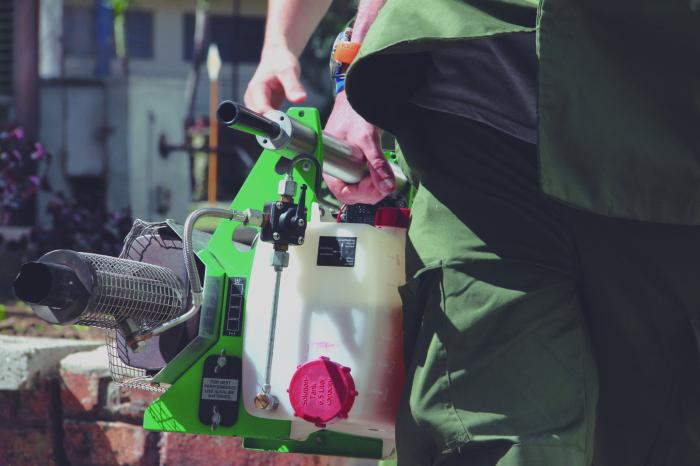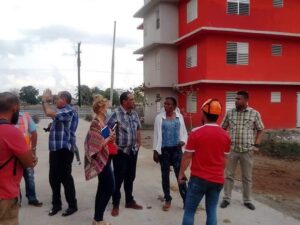The responsibility is not exclusive to the Health system, but rather implies an organised social mobilisation to reduce infestation rates and protect the most vulnerable groups.
Cuba is facing a complex epidemiological situation characterised by a concurrent epidemic of dengue and chikungunya.
On this topic, Doctor Carilda Peña García, Vice Minister of Public Health, reported that all provinces remain in the endemic epidemic corridor, with the exception of the special municipality Isla de la Juventud, which is in the alarm zone.
She added that by the end of week 46, a 2.5% increase in fever consultations was recorded compared to the previous week. The provinces with the highest incidence rates of suspected dengue cases are Villa Clara, La Habana, Sancti Spíritus, Las Tunas and Artemisa, although there is proven transmission of the disease in 49 Health areas of 41 municipalities, across 13 provinces.
The Vice Minister stressed that chikungunya is now present in practically all municipalities, albeit with varying intensity. The territories with the highest epidemiological risk, due to the simultaneous circulation of both arboviruses, are La Habana, Matanzas, Cienfuegos and Guantánamo.
The health authority emphasised that the fundamental cause of the current situation is the «very high» infestation rates of the Aedes aegypti mosquito. The territories with the highest indices are Pinar del Río, Sancti Spíritus, Camagüey, Santiago de Cuba, La Habana and Villa Clara.
As a pillar of the response, explained Peña García, an intensive adulticide treatment (fumigation) is being developed across the entire national territory. She detailed that, while the objective is to cover 100% of urban areas within three weeks, during the last week only the provinces of Mayabeque, La Habana, Cienfuegos, Ciego de Ávila and Santiago de Cuba fulfilled their plan above 95%.
Regarding fumigation, she clarified that during an epidemic period – as is the case – allowing vector control personnel access to homes to carry out the adulticide treatment is mandatory, and refusal implies committing the offence of spreading an epidemic. She added that, following this procedure, the home must remain closed for 45 minutes to guarantee its effectiveness.
She called for efforts to be concentrated on the cause of the problem: the mosquito, and insisted on community participation to eliminate breeding sites, scrub water tanks, not to discard the larvicide (abate), and to allow fumigation. Similarly, she confirmed that the population can direct their concerns or reports to the Vector Control Department of their polyclinic or to the Department of Hygiene and Epidemiology in their municipality.
ARBOVIRUSES IN CHILDREN
Doctor Yamirka Montesino Felipe, head of the National Group for Paediatric Intensive Care and Emergency Medicine of the Ministry of Public Health, explained that all children under two years of age who present with fever must be admitted to hospitals immediately, according to the protocols established to confront the current outbreak of arboviruses.
She added that the measure aims for close surveillance and early treatment to prevent complications in the most vulnerable groups. The specialist argued that, within this group, those under three months and children with comorbidities – such as oncological diseases, diabetes, epilepsy, or chronic kidney ailments – require even more differentiated care and follow-up, as they present a high risk.
«When the child starts with a fever and the family immediately seeks medical assistance, we manage to reach the sick patient early and avoid complications,» she stressed. She insisted that this immediacy is the key to «reversing evolutions that could be unfavourable» for the patient.
Regarding clinical manifestations, the doctor detailed that fever in children is persistent, difficult to manage, and can last between 48 and 72 hours. This symptom is accompanied by skin lesions, which can range from simple redness to blisters in the youngest infants, and joint pain, although the latter is «not as severe as we have seen in adults.»
Among the most commonly observed complications, she mentioned gastrointestinal issues with vomiting and diarrhoea, which can lead to dehydration, especially in infants. Therefore, she emphasised the importance of maintaining adequate hydration and continuing breastfeeding in those under three months.
ADMIT PREGNANT WOMEN WITH FEVER, TO PREVENT COMPLICATIONS
Doctor Diana Couto Núñez, President of the Cuban Society of Gynaecology and Obstetrics and a specialist at Minsap, indicated that pregnant women who present with a febrile syndrome are admitted immediately to hospital institutions, as part of an established protocol to protect this vulnerable group during outbreaks of arboviruses like dengue and chikungunya.
She explained that admission allows for the control of symptoms and a timely differential diagnosis by teams of experts, avoiding delays that could lead to serious complications. «A diagnosis cannot be made at home. That must be done by the hospital,» she stressed, emphasising that the Health System receives daily morbidity reports from all provinces for the monitoring of these cases.
Couto Núñez issued an alert to pregnant women, especially those with comorbidities like hypertension or diabetes, to go to the doctor at the first symptom.




